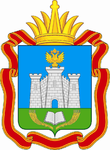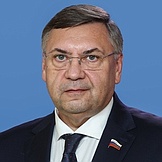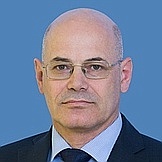Regional flags and emblems


PROFILE
Established 27 September 1937
Capital Orel
The Orel Region is part of the Central Federal District
Area 24,700 sq km
Population 685 700 (2025)
Ethnic groups
(2020 National Census, %)
Russian – 95,34
Other – 4,66
Administrative divisions (2024)
Municipal districts – 23
Municipalities – 1
City districts – 3
Rural towns – 16
Rural districts – 207
Geography and climate
The Orel Region is located on the Central Russian Upland, in European Russia. It borders on the Kursk, Bryansk, Kaluga, Tula and Lipetsk regions.
The main river in the region is the Oka with its tributaries.
The climate is temperate continental. January temperatures average –6.5°C. July is the hottest month with average temperatures at 18.4°C. Moderate rainfall occurs during a year.
The region is home to a protected area, the Orlovskoye Polesye National Park.
Government
The legislative branch is represented by the Orel Regional Council of People’s Deputies, which is the permanent, representative and only body of legislative authority in the region. The Orel Regional Council of People’s Deputies has 50 deputies elected for five years, with 25 of them running in single-mandate constituencies and the other 25 in the single electoral district in proportion to the number of votes cast for lists of deputies nominated by electoral associations.
The current Orel Regional Council of People’s Deputies was elected in September 2021. Its term expires in September 2026.
The executive branch in the Orel Region is represented by the highest-ranking official, the supreme executive body of the region, and executive bodies of special competence of the region. The Government of the Orel Region is the supreme and permanent executive body of the region.
The Governor of the Orel Region is the highest-ranking official of the Orel Region who heads the executive authority of the region and determines the structure of the executive bodies in the region, elected for five years by Russian citizens who permanently reside in the region. He forms and heads the Government of the Orel Region. The term of office of the incumbent Governor expires in September 2028.
Economy and natural resources
The economy of the Orel Region is represented by all types of economic activities, the leading of which are industry, agriculture, housing construction, trade, transport and communications. The industrial complex is the backbone of the regional economy. Industrial output accounts for over 20% of the regional GDP. The major industry is manufacturing, represented by the metal industry and the production of finished metal products, machinery and equipment, vehicles and automotive equipment, electric equipment, non-metal mineral commodities, rubber and plastic articles and food. Currently, construction materials manufacturing is growing rapidly. The food and textile industries are also on the rise. The major businesses in the region are the Orel Steel-Rolling Plant, the Orel Metals group of companies, the Orelstroy construction company and the Vostok-Service group of companies.
Agriculture is one of the leading economic sectors in the Orel Region, accounting for almost 20% of the regional GDP. About one third of the population in the region live in rural areas. In total, the region has about 200 agricultural organizations of various forms of ownership, over 1,200 farms.
The region’s agriculture specializes in growing grain, sugar beet, potatoes, vegetables and oil crops and the production of meat, milk and eggs.
The Orel Region has over 300 proven deposits and areas of natural resources. The main resources are iron ores, cement raw materials, silicate raw materials, phosphate rock, raw materials for manufacturing glass wool, mineral pigments, peat, fresh drinking water, mineral water, raw materials for manufacturing construction materials (building stone, sand, high-melting clay), brick-and-tile raw materials, expanded clay material, carbonate rock, and sand and gravel and sand, gravel and rubbly sediments.
Culture and tourism
Orel was founded in 1566 by order of Ivan the Terrible as a fortress to defend southern Russian borders from the Crimean Tatars. At that time, the city was a wooden fortress and a settlement. In the early 17th century, it was one of the centers of revolt against the reign of Boris Godunov and Vasili IV Shuysky. In 1611, Orel was impoverished and in 1615 it was destroyed by Polish troops, after which it was rebuilt anew. In the 19th century, Orel was a typical gentry and merchant city.
Currently, Orel’s highlights are not only a great number of museums, especially memorial museums of Russian writers, such as Ivan Bunin, Nikolai Leskov, Ivan Turgenev State Literary Museum, and others, but also a large number of theatres. The pride of place among them belongs to the Turgenev State Academic Drama Theatre founded by Sergei Kamensky. The theatre used to be famous all over Russia. Mikhail Shchepkin, Polina Strepetova and other outstanding actors performed on its stage. In the 1990s, a Museum Theatre of Count Sergei Kamensky opened in the upper lobby. The small stage of this theatre is the venue of chamber performances from the count’s repertoire and plays by Russian classics.
The city of Bolkhov (50 km north-west of Orel) is known for a great number of churches and the surviving 19th century urban area.
Mtsensk, a town to the north-east of Orel, is considered to be the oldest town in the region, first mentioned in chronicles in 1146. Originally Mtsensk was a trade fortress and a craft center. When we visit it now, we can imagine what small provincial towns in Central Russia used to look like and enjoy strolling along the surviving 19th century trade rows.
Writer Ivan Turgenev’s ancestral estate of Spasskoye-Lutovinovo is located 12 km from Mtsensk. At present, it houses a state and nature memorial museum reserve.
The town of Livny, situated to the south-east of Orel, was founded in 1486 as a fortress to defend southern Russian boundaries. In fact, this settlement was mentioned in chronicles as far back as the 12th century. At present, the town is interesting for the surviving architectural ensemble of the Monastery of St Sergius (founded in 1592), the active 16th century Church of St Sergius and many other mid- and late 19th century buildings.
The village of Saburovo to the south-west of Orel hosts the Saburovo Fortress: the ruins of military commander Mikhail Kamensky’s estate, designed to resemble a fortress. The Orlovskoye Polesye National Park is located near the village of Khotynets. The national park recreates a unique atmosphere of the southern Russian taiga forest.
The village of Staroye is known for a spring of holy water, which is considered to have medicinal qualities.



